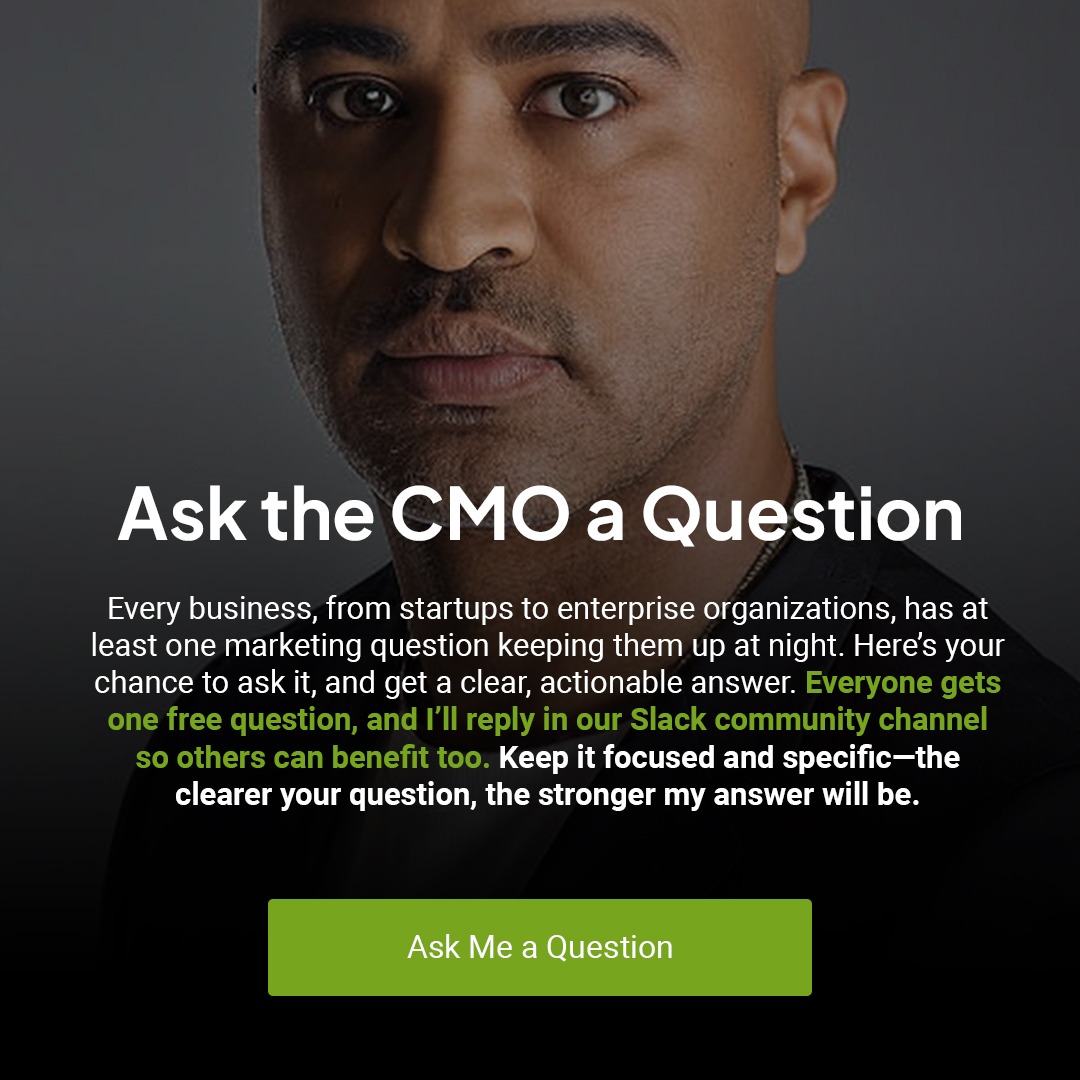As someone who’s spent decades navigating the rapidly changing tides of marketing—from leading teams to building an agency to supporting endless businesses and founding startups—the Chief Marketing Officer (CMO) role has never been more dynamic or demanding.
The landscape of marketing leadership is shifting faster than ever, driven by technological advances, evolving consumer expectations, and the growing need for accountability in delivering measurable outcomes. As I see it, 2025 is poised to bring unprecedented opportunities and significant challenges, requiring CMOs to adapt and innovate at every turn.
Here’s my take on how the CMO role is evolving and what I believe it will take to stay ahead in 2025:
1. The Continued Fusion of Marketing and Revenue
Marketing has become inseparable from revenue generation. Today, CMOs are expected to be just as accountable for financial results as their counterparts in sales and operations. This means the traditional focus on brand awareness and lead generation must evolve into a broader strategy that optimizes every stage of the customer lifecycle, from acquisition to retention.
- Collaborating with sales teams to create shared accountability for revenue outcomes can bridge gaps and align departmental goals.
- Leveraging tools like CRM platforms and predictive analytics ensures marketing strategies are backed by data and drive real-time results.
- Integrated campaigns that combine brand storytelling with actionable insights can deliver sustainable, long-term revenue growth.
2. AI: From Tool to Strategic Partner
Artificial intelligence (AI) has evolved from a buzzword to an indispensable element of marketing strategy. AI’s potential to automate tasks, deliver hyper-personalized experiences, and generate actionable insights has made it a critical component of how CMOs plan and execute campaigns. Yet, the actual value of AI lies not just in what it can do but how it is integrated into human-led strategies.
- Deploying AI for hyper-personalized customer experiences can strengthen brand loyalty and increase conversions.
- Using AI-powered insights to inform strategic decisions helps CMOs stay ahead of market trends and competitors.
- Ensuring teams are trained to integrate AI effectively into workflows will bridge the gap between automation and human creativity.
3. Mastering Cross-Functional Collaboration
Gone are the days when marketing could operate in isolation. Today, the CMO’s role is deeply intertwined with other departments, requiring seamless collaboration across product development, IT, finance, and customer success. This interconnectedness drives cohesive strategies and ensures that marketing initiatives align with the organization’s broader goals.
- Building strong relationships with product teams ensures marketing campaigns are aligned with development timelines and feature launches.
- Regular collaboration with IT helps CMOs leverage the right tech stack to streamline operations and deliver seamless customer experiences.
- Partnering with finance enables marketing to effectively align budgets with strategic objectives and prove ROI.
4. Customer-Centric Leadership
Putting the customer first has always been a cornerstone of effective marketing, but in 2025, it’s about more than just meeting expectations. Today’s consumers demand a deeper connection with brands that understand their needs, share their values, and engage with them authentically. For CMOs, this means championing the voice of the customer at every level of the organization.
- Investing in tools like customer journey mapping enables CMOs to pinpoint pain points and create tailored solutions.
- Creating feedback loops through surveys and social listening ensures marketing strategies align with customer expectations.
- Communication transparency—whether through pricing, policies, or practices—can strengthen trust and loyalty.
5. The Increasing Weight of ESG
Environmental, social, and governance (ESG) considerations have transitioned from being a differentiator to a necessity. Modern consumers are increasingly discerning about the brands they support, prioritizing those that demonstrate genuine commitment to sustainability and social responsibility. CMOs are now at the forefront of aligning a company’s values with its messaging and operations.
- Ensuring ESG initiatives are fully integrated into brand storytelling helps businesses resonate with socially conscious consumers.
- Partnering with HR and operations ensures that internal practices align with external commitments, avoiding accusations of greenwashing.
6. The Accelerating Rise of the Fractional CMO
The fractional CMO model has gained traction as businesses face tighter budgets and rapidly changing market conditions. I’ve personally championed this approach, recognizing its value in flexibly providing companies with high-level expertise. This trend is particularly impactful for startups and mid-sized businesses seeking strategic leadership without the long-term commitment of a full-time hire.
- Fractional CMOs provide fresh perspectives and specialized expertise that can be scaled up or down based on business needs.
- Startups and mid-sized companies benefit from access to top-tier talent without the long-term financial commitment.
Final Thoughts
The role of the CMO in 2025 will demand a unique combination of adaptability, creativity, and data-driven decision-making. We’ll need to lead with vision while staying grounded in measurable outcomes, navigate complex cross-functional dynamics, and remain attuned to the evolving needs of our customers. The challenges are significant, but so are the opportunities to redefine what marketing leadership looks like. For those who thrive on change, this is an exciting time to be in the CMO seat. By staying curious, proactive, and willing to embrace new ideas, we can drive growth within our organizations and help shape the future of marketing as a discipline.
Keep Reading
Want more? Here are some other blog posts you might be interested in.
Your customers expect to be tricked (unfortunately). They have seen bait pricing. They have fought to cancel. They have waited on ...
Confusing a launch plan with a GTM strategy is one of the fastest ways to stall growth. A launch plan gets ...
On Monday, October 20, 2025, Amazon Web Services experienced a major incident centered in its US-EAST-1 region. The problem began in ...
For founders and growing companies
Get all the tips, stories and resources you didn’t know you needed – straight to your email!




